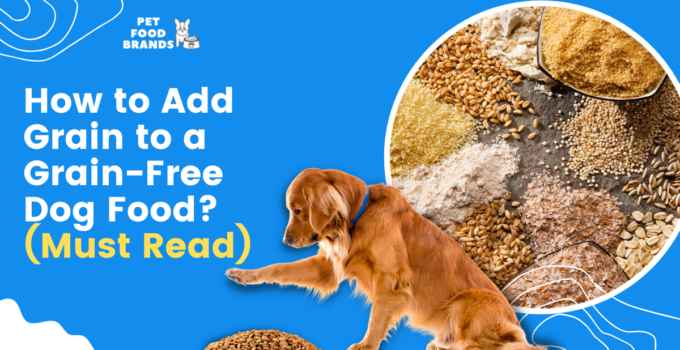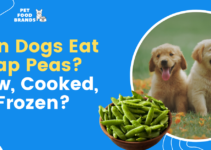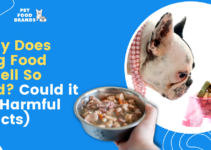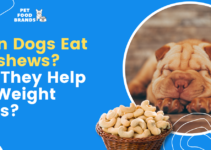My dogs love to eat, so I love giving them different things to try, taste, and explore. To me, this is a way to add enrichment to their life.
In this article, when talking about toppers, I will not be talking about using grains to replace animal protein or meat completely but using them as an addition to a diet.
So, in most dogs, grains can be a valuable source of nutrients. Even though the bad rep grains have gotten over the years due to dog food companies going overboard, they still have many health benefits.
So if you’ve bought exclusively grain-free dog food, here’s how to add some grain to it as a fun little treat.
1. Make Healthy Choices
Now, there is an endless combination of things that you can add to your pet’s diet. We all know that grains, wheat, and corn are nobody’s first choice. Why? Because they are high in gluten and can cause allergies and weight gain in dogs.
I have included some grains that are not highly allergenic, easy to find at a local grocery store, and come packed with nutrients.
Whole Grains(Bran)
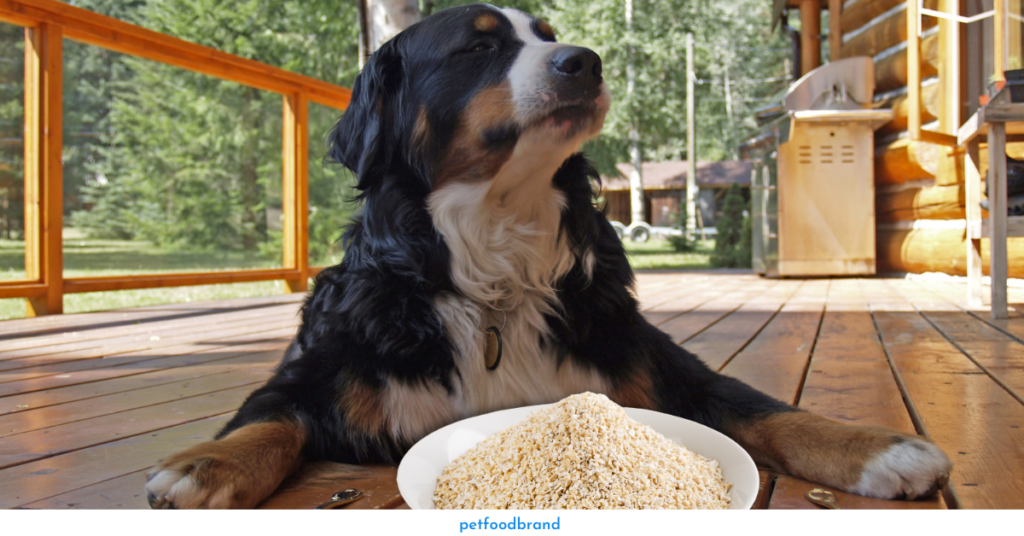
The bran is rich in vitamin B and other minerals, great for intestinal health. The whole grain also includes the central germ, which contains vitamins E and B, antioxidants, and some fats as well. So, whole grains are much more nutritious than highly refined grains, which probably won’t come as any surprise to you.
Quinoa
The thing about quinoa is that it’s a gluten-free food similar to rice. So, if you or your dogs are going gluten-free, this is great food. The darker the hue, the greater the antioxidant capacity. The carbohydrate content is lower than rice, for sure. In addition to protein, it has a super low carb content, as we said, but also high fiber content and vitamins, particularly vitamin B, and minerals such as iron, calcium, and potassium. It contains something called quercetin, which is a strong antioxidant that fights any disease.
Brown Rice
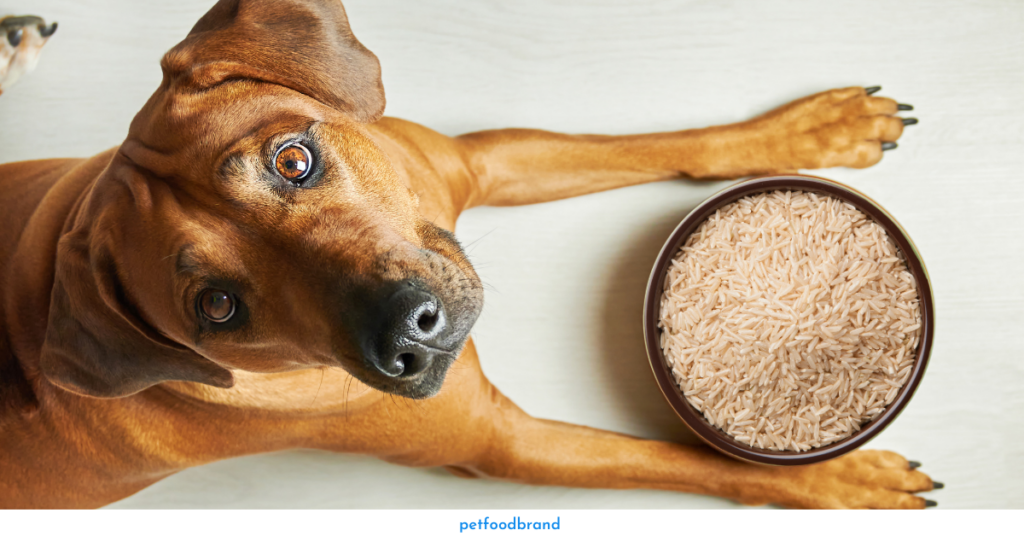
The top three benefits of brown rice include the following. One, it’s high in fiber, which makes your dog feel full and regulates digestion. Number two is calcium, phosphorus, and vitamin D, which help keep your dog’s bones healthy and strong. And number three, brown rice is a good source of many vitamins and minerals, including B vitamins, folate, magnesium, and more.
Barley
It’s just a tiny seed, yet it is loaded with nutrition. It’s like it would just burst open in a dog’s body, and the cells are gonna say, “That’s good stuff!” So here’s what barley is good for: it helps to prevent inflammation, and it helps to build a protective barrier in the digestive tract, in that lining. It’s almost like it builds up its own national defense for your system. In foods, barley is a source of vitamins, carbohydrates, proteins, and fatty oils. Dogs with gluten sensitivities should, however, stay away from barley, which, if eaten, can worsen the problem. Also, barley might lower blood sugar levels.
Flax Seed
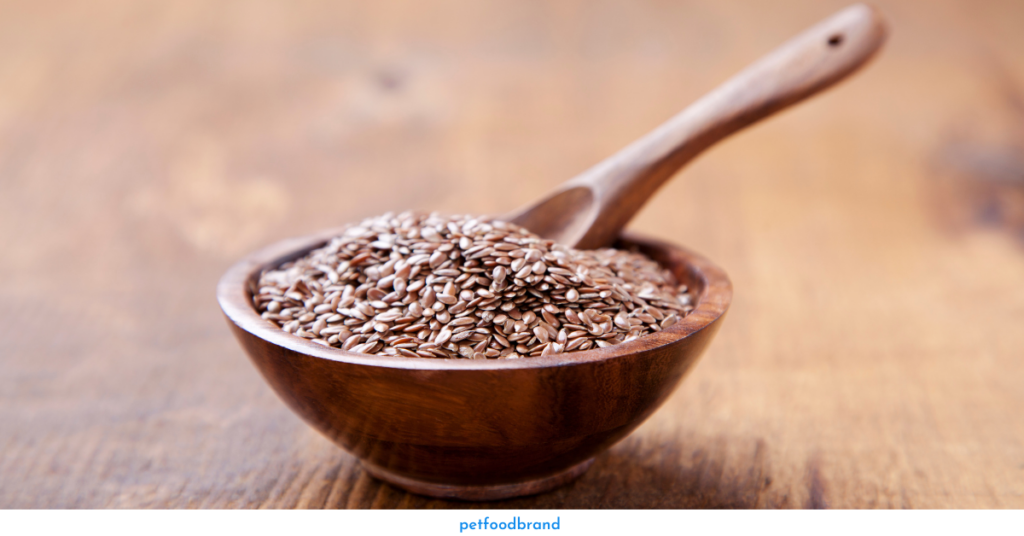
Flax seed contains essential fatty acids like omega-3s or alpha-linolenic acid, dietary fiber, protein, and lignans. Omega-3 essential fatty acids aid in good cell function, promoting strong cell membrane structure, improving immune system balance, improving the health of your dog’s skin and coat, aiding normal reproduction, and healthier body growth. Most canine diets are high in omega-6. Giving your dog flaxseed oil, high in omega-3 oils, can help balance the ratios.
2. Get Cooking
You need to prepare the grains before giving them to your dog. Dogs cannot handle raw grains as well as you think they can.
Also, the grain doesn’t need to undergo an extreme extrusion process that strips the food of its vitamins and minerals.
Cooking methods can range from anything to boiling and baking. Frying or anything that involves oil or dairy is a no-go. Some grains may need to be soaked overnight for them to be able to cook properly.
You don’t need to add condiments to your grains like you do to human food. Salt and sugar can especially harm your dog’s health.
You can prepare it in small batches daily or make a big batch depending on how long the grains can stay fresh.
The trick here is to know that not every grain on this list will be super healthy for your dog. You need to consult your dog’s veterinarian to develop a specific diet plan and ensure that it isn’t allergic to any ingredients.
3. Add Your Grains as Toppers to Dog Food
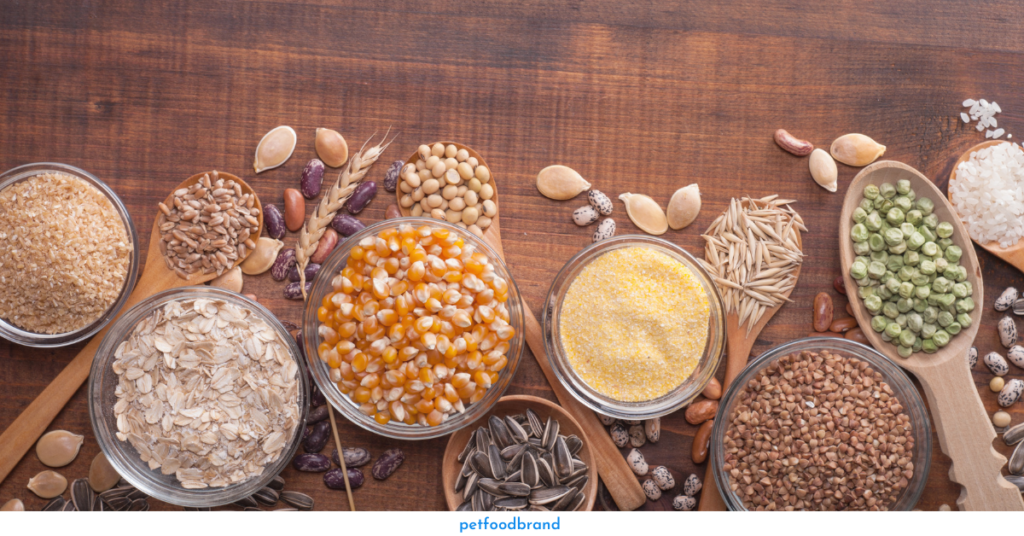
First of all, why are toppers so important? Kibble is made for the convenience of the consumer, the pet owner, and not the optimal health of our pets. Kibble was purely made for convenience and cost’s sake.
By adding to your kibble, you can give it a boost in nutrients, meat, and moisture that they’re lacking in their kibble and need to continue living a happy and healthy life.
Give your grain-free dog food a little razzle-dazzle by adding cooked grains on top of it. This adds variety to taste and texture and increases its nutritional value.
To create an extra layer of grain-filled goodness, you may use grain-based milk to hydrate your kibble. This prevents dehydration and makes mealtime more fun and the dog food richer.
Do You Need to Add Grains to Dog Food to Avoid DCM?
I’m going to say no. Raw food diet does not need to have grains in it. But keep in mind; I’m not a veterinarian or a nutritionist.
Although if a veterinarian or nutritionist told me I needed to add grains to my dog’s diet, I would smile and say, “Okay,” and not do it. Grain grains were added to the diet in the first place to keep the protein at a certain level while cutting costs and not using animal protein.
The problem with grains as a protein is that they don’t come with the same amino acids as animal protein. So dogs eating kibble with grains in it were starting to develop different types of health issues.
So pet parents said, “Hey, can I have grain-free versions?” And the brand said, “Absolutely,” and swapped out those grains with legumes. No, they didn’t add more animal protein, which is species-appropriate for our dogs.
They put legumes in, which, I don’t know about you, but my dogs have not been eating beans recently or ever. So those legumes acted as a nutrient blocker, blocking taurine from entering the system. And that is what people believe has led to the spike in DCM cases in dogs.
It’s not the grains; it’s the pet food companies cutting corners and not giving our dogs a species-appropriate diet. When fed a raw food diet, all the nutrients are more bioavailable.
There are no ingredients that act as nutrient blockers, and our dogs are getting everything they need. No, you don’t need to add grains to it because your dogs are getting the amino acids they need from the protein already in the diet.
Should You Avoid Grain-free Dog Food?
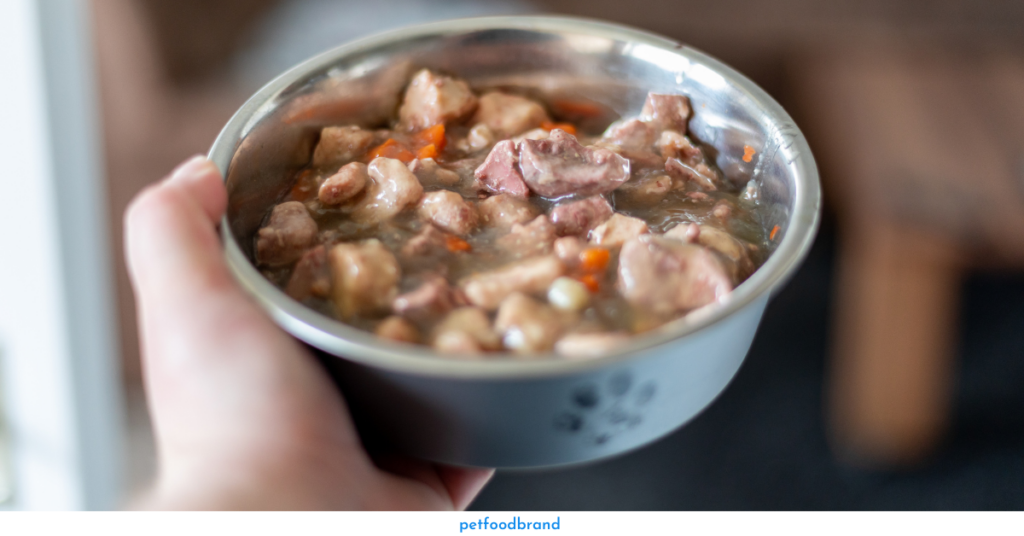
Generally, it’s completely up to the consumer whether you want to feed a grain-free or grain-inclusive diet, as long as you’re feeding high-quality dog food with good ingredients, good sourcing, and good company ethics. Then you are completely good to go to make that decision for your dog.
If your dog is allergic to specific grains, you’re likely to be more likely to feed grain-free dog food because, obviously, you want to avoid those allergens.
If your dog has no allergies, it’s completely up to you which one you want to go with, as long as you’re feeding good quality food with great ingredients. No matter what food you choose, it’s important to look at where the food is sourced from and the company’s ethics.
Conclusion
I believe in variety. So, I give my dogs various foods on top of their base food, and I’ll talk about why I feed them in a minute and what this does for my dogs.
This helps me have more peace of mind that they’re getting all the macro and micronutrients they need.
Plus, I like giving them different foods because they enjoy it. I do encourage you to add as much variety to your pet’s diet as possible.
And if that means adding a whole bunch of toppers to spice things up, you will want to cut back on whatever kibble or dehydrated food you are currently feeding. Otherwise, we’ll gain a couple of pounds here and there.

Ankita is a passionate pet lover and head of content at Pet Food Brands. With her extensive knowledge and research, she provides pet owners with top-quality information on dog food and nutrition. Her dedication to improving the lives of dogs makes her a leading voice in the industry.

